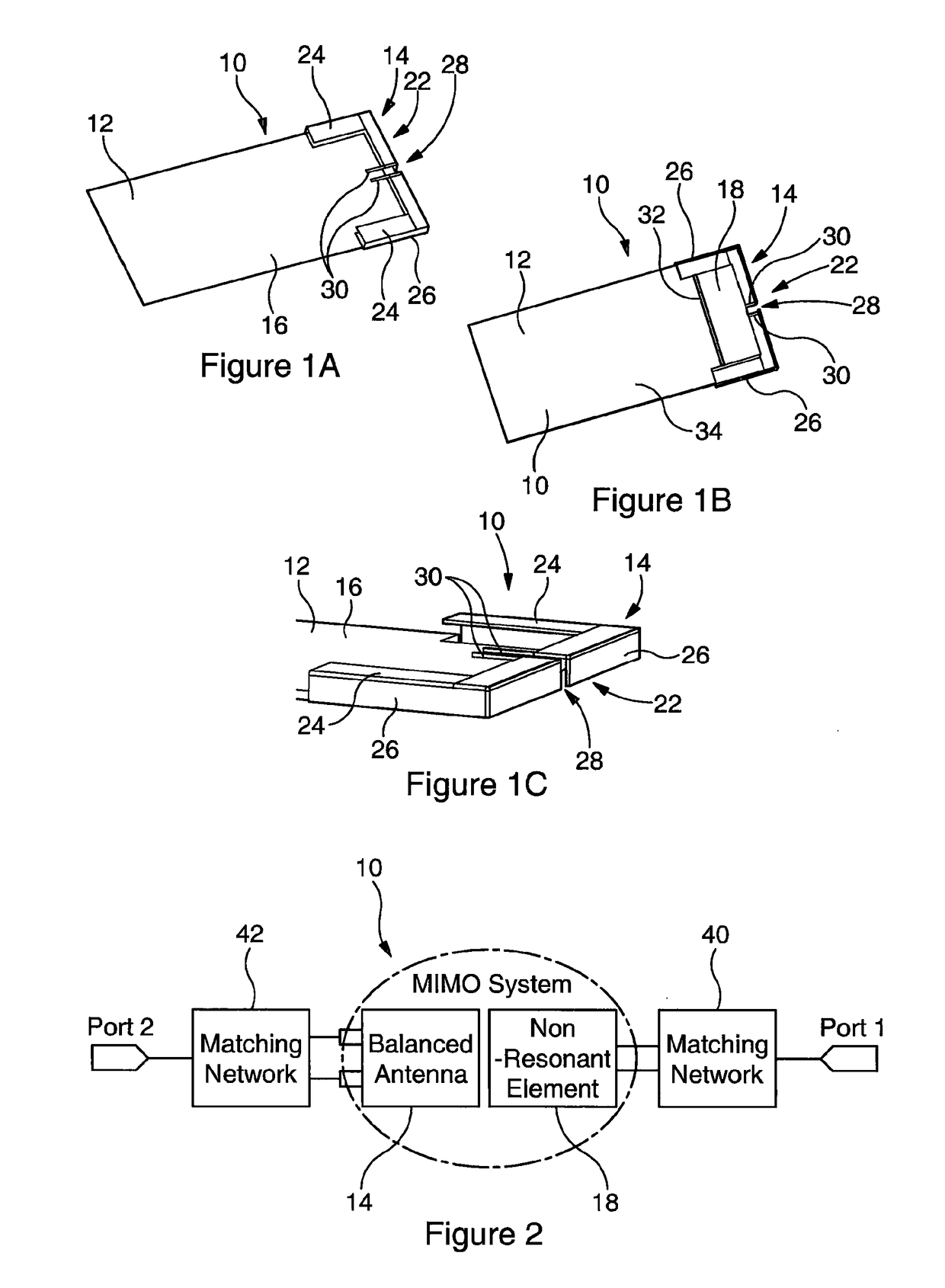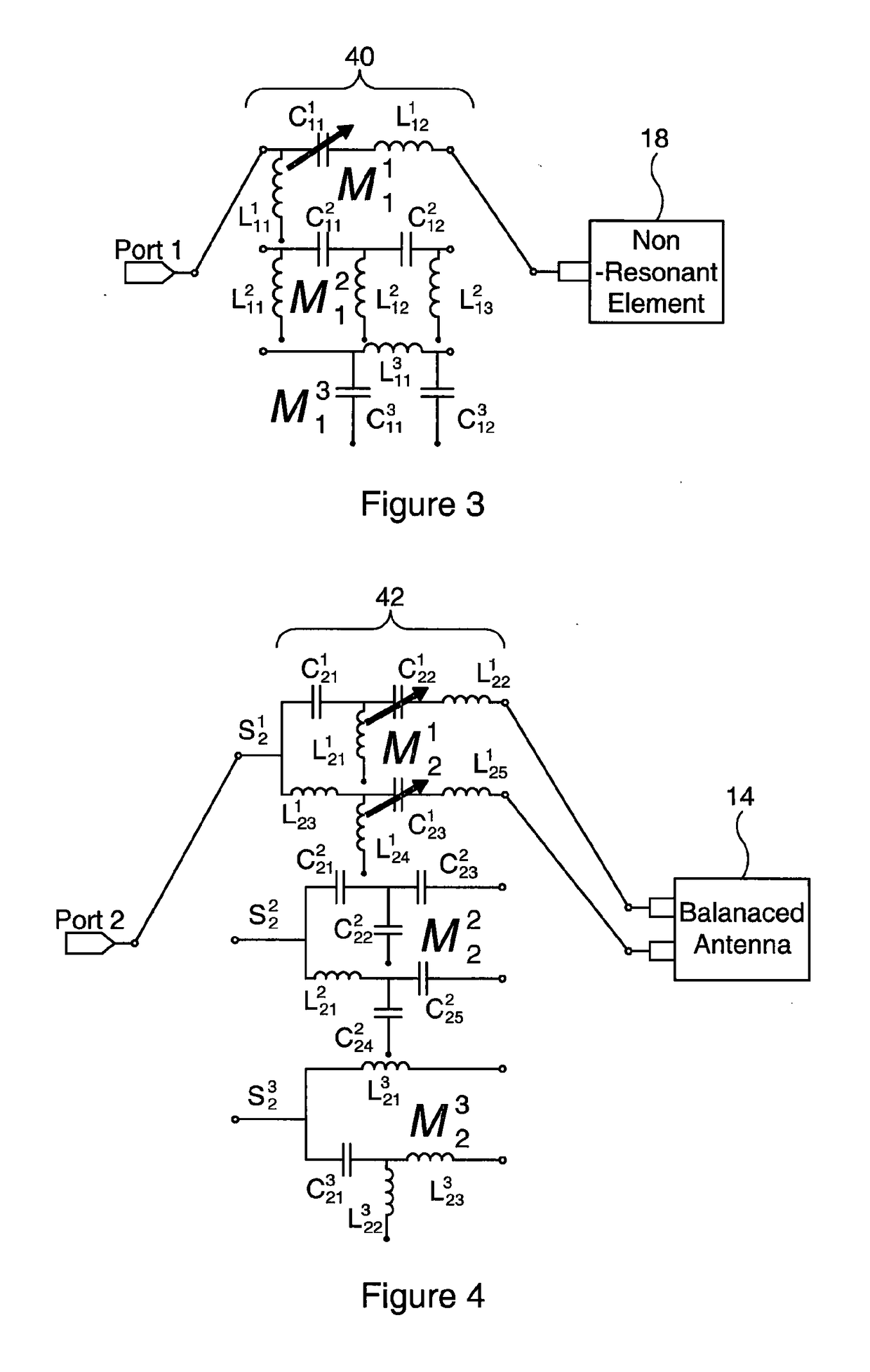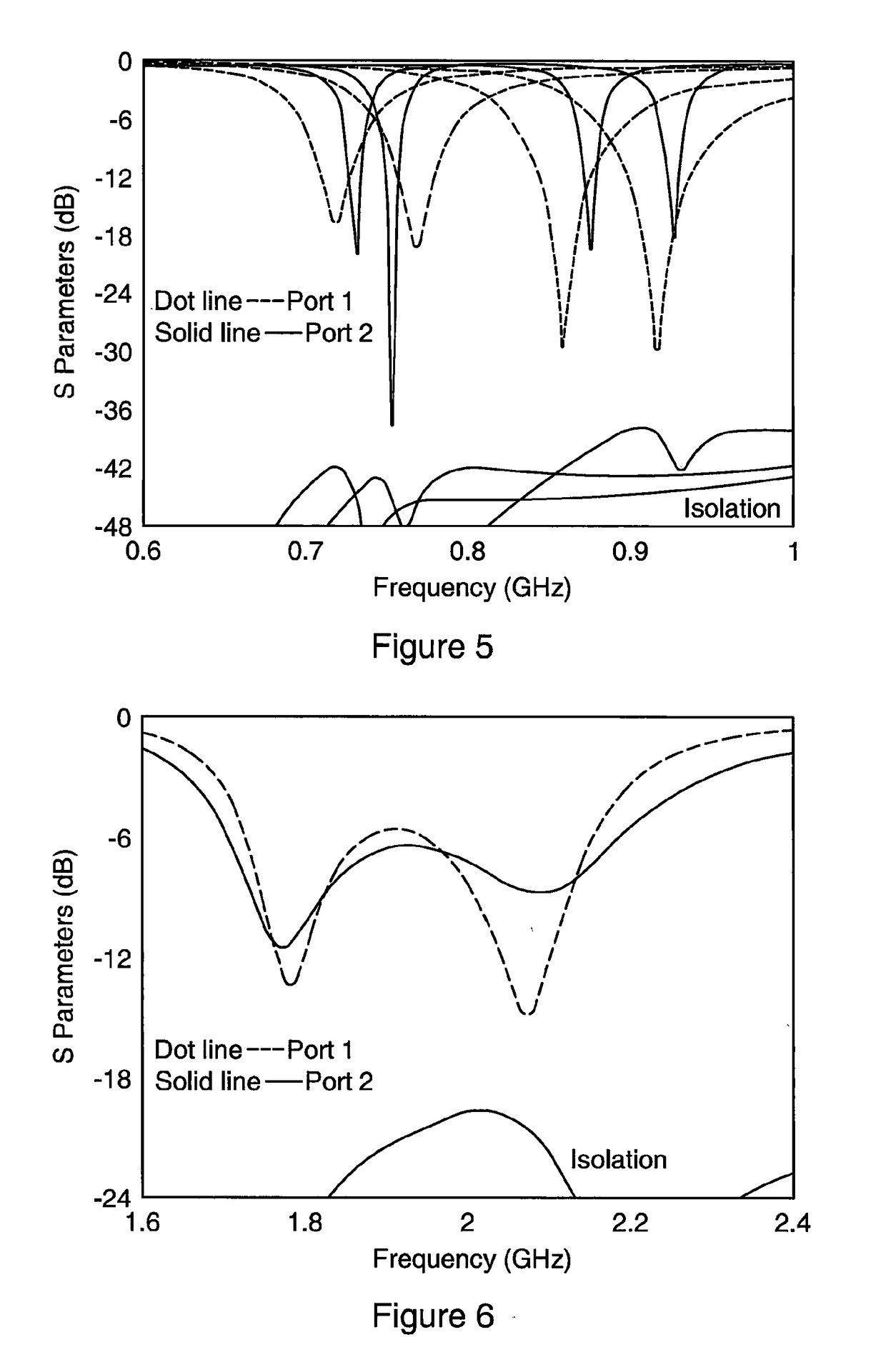Reconfigurable antenna
a technology of antennas and antenna supports, applied in the direction of antennas, particular array feeding systems, antenna supports/mountings, etc., can solve the problems of limited ability to provide adequate isolation between each radiator, configuration may not be ideal or even practical, and few portable devices with mimo capability are available in the marketplace. , to achieve the effect of high performan
- Summary
- Abstract
- Description
- Claims
- Application Information
AI Technical Summary
Benefits of technology
Problems solved by technology
Method used
Image
Examples
first embodiment
[0057]With reference to FIGS. 1A, 1B and 1C there is shown an antenna 10 according to the present invention, mounted on a PCB 12. The antenna 10 comprises a balanced antenna 14 mounted on a first surface 16 of the PCB 12 and an unbalanced antenna in the form of a non-resonant element 18 mounted on an opposite second surface 20 of the PCB 12. Both the balanced antenna 14 and the non-resonant element 18 are located at the same end 22 of the PCB 12.
[0058]The balanced antenna 14 comprises two inwardly facing planar L-shaped arms 24 which are mounted above and parallel to the plane of the PCB 12. As best illustrated in FIG. 10, each arm 24 is mounted at its outer edge on an orthogonal support 26 which extends from a long edge of the PCB 12, past the end 22 of the PCB 12 and in towards the centre of the end 22. In other words, the balanced antenna 14 is suspended above a U-shaped cut-out around the end 22 of the PCB 12. Notably, the supports 26 and the arms 24 do not meet in the centre of...
second embodiment
[0074]FIG. 8 shows an enlarged underside perspective view of an antenna 50 according to the present invention. The antenna 50 is substantially similar to that shown in FIGS. 1A through 1C except that the structure of the non-resonant element 52 and the balanced antenna 54 is slightly different. More specifically, the non-resonant element 52 is bracket-shaped and comprises an elongate perpendicular end portion 56 mounted along the end 22 of a portion constituting the planar non-resonant element 18. Furthermore, the balanced antenna 54 is “semi-bracket” shaped in that the supports 58 for the L-shaped arms 24 are only provided along the long edge of the PCB 12 and do not extend inwardly towards the centre of the end 22.
third embodiment
[0075]FIG. 9 shows an enlarged underside perspective view of an antenna 60 according to the present invention. The antenna 60 is substantially similar to that shown in FIGS. 1A through 1C except that the non-resonant element 62 is approximately half the width of the non-resonant element 18. Thus, the gap 32 is closer to the end 22 than to the end of the U-shaped cut-out beneath the balanced antenna 14.
[0076]FIG. 10 shows an enlarged top perspective view of an antenna 70 according to a forth embodiment of the present invention. The antenna 70 is substantially similar to that shown in FIGS. 1A through 1C except that the balanced antenna 72 is constituted by a printed dipole having a central substantially T-shaped cut-out 74 separating each arm 75 of the dipole and a small rectangular cut-out 76 at the extreme end of each arm 24, adjacent the long edge of the PCB 12. There is also no cut-out in the PCB 12. It will be noted that the distance between the balanced antenna 72 and the PCB 1...
PUM
| Property | Measurement | Unit |
|---|---|---|
| surface area | aaaaa | aaaaa |
| thickness | aaaaa | aaaaa |
| thickness | aaaaa | aaaaa |
Abstract
Description
Claims
Application Information
 Login to View More
Login to View More - R&D
- Intellectual Property
- Life Sciences
- Materials
- Tech Scout
- Unparalleled Data Quality
- Higher Quality Content
- 60% Fewer Hallucinations
Browse by: Latest US Patents, China's latest patents, Technical Efficacy Thesaurus, Application Domain, Technology Topic, Popular Technical Reports.
© 2025 PatSnap. All rights reserved.Legal|Privacy policy|Modern Slavery Act Transparency Statement|Sitemap|About US| Contact US: help@patsnap.com



